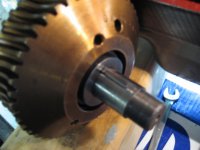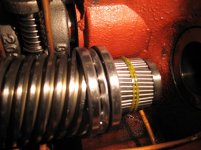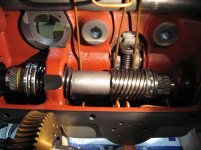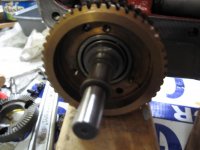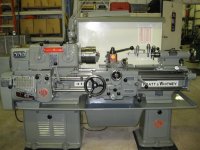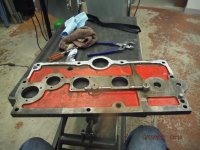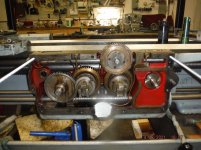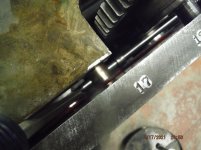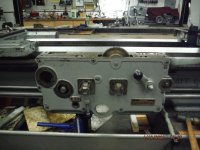tailstock4
Cast Iron
- Joined
- Mar 3, 2013
- Location
- Oklahoma, USA
I've posted here a couple times but not often. But I've gained a lot of information by being a lurker through the years and thought that I perhaps had a chance to give some information back this time.
About two years ago I restored a Pratt & Whitney 12C. It was completely disassembled, repaired and scraped. I also had custom needle bearings made for the apron which is a story in itself.
But to your question of how to put the apron front back on, you begin by mounting it and getting it into position. But before you do this get about a 3 foot piece of .035 mig wire (it is strong and slippery) and a short piece of wooden dowel rod. Make several wraps of the wire around the rod and secure it. Feed the other end of the wire through the safety interlock. Then bring the wire back to the dowel rod and make a couple wraps. You should now have a handle with a loop going through the safety interlock.
As you pull the handle with the cover lined up push evenly with maybe a light tap. It should slide into place. Then cut the wire and pull it out.
Since you have it this far, there are several areas that you should take a look at. This lathe has a very extensive oiling system in the saddle. As johnoder has said, it is unwise to assume that the oiling system is functioning as Pratt & Whitney intended. I have found in many of these old lathes that they only really wear where the oiling systems fail.
One other thing I did learn is that the clutches in the apron must be disassembled in place. There is quite a bit more to this process. Do you need more information?
About two years ago I restored a Pratt & Whitney 12C. It was completely disassembled, repaired and scraped. I also had custom needle bearings made for the apron which is a story in itself.
But to your question of how to put the apron front back on, you begin by mounting it and getting it into position. But before you do this get about a 3 foot piece of .035 mig wire (it is strong and slippery) and a short piece of wooden dowel rod. Make several wraps of the wire around the rod and secure it. Feed the other end of the wire through the safety interlock. Then bring the wire back to the dowel rod and make a couple wraps. You should now have a handle with a loop going through the safety interlock.
As you pull the handle with the cover lined up push evenly with maybe a light tap. It should slide into place. Then cut the wire and pull it out.
Since you have it this far, there are several areas that you should take a look at. This lathe has a very extensive oiling system in the saddle. As johnoder has said, it is unwise to assume that the oiling system is functioning as Pratt & Whitney intended. I have found in many of these old lathes that they only really wear where the oiling systems fail.
One other thing I did learn is that the clutches in the apron must be disassembled in place. There is quite a bit more to this process. Do you need more information?


